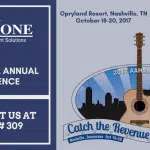
Categorize claims by aging buckets:
Categorize claims that are more than 60, 90, 120, and 180 days old. For claims that are more than 120 or 180 days old, you can quickly determine whether the claims are collectible, uncollectible, or questionable. This will allow you to focus on the ones that you still have a chance to collect first. The older the A/R, especially in the 180-day+ range, the less likely it is that you will be reimbursed. When you reach your final determination that some claims are uncollectible, write them off and remove them from your A/R so that you have a clear picture of what has the true potential to be collected, versus what will be considered bad debt.
Know payer contracts and timely filing guidelines:
Payer requirements for claim submissions vary, so your billing staff has to review the terms of each contract to ensure accurate billing according to each payer’s guidelines. Not all payers were created equal. Each payer has its own timely filing deadlines that should be stored systemically so that you will always be able to monitor claims approaching the filing deadline and ensure they are worked as a priority.
Explore creative ways to reduce outstanding claims, especially those over 180 days:
Historical data indicates that many claims over 180 days fall into the self-pay category — when the outstanding balances are owed by patients. With the rates for home infusion constantly being slashed, collecting on co-pay balances are an essential part of the process. You need to be creative versus just sending a monthly statement month-after month. Some suggestions:
Credit Cards:
It is essential to accept all major forms of credit cards.
Payment Plans:
If a patient cannot afford to pay the balance due in full, suggest a payment plan option. Be sure to let the patient know that if they skip a payment, they will immediately owe the balance in full. You should be prepared to send the patient a payment plan agreement to sign. Make sure, however, that whatever payment you agree to, does not cost you more to track and process than you are receiving in the form of a payment.
Credit hold:
If a patient refuses to pay their balance or just ignores your attempts to collect, make sure you put the patient on “credit hold”. This means they cannot get another delivery until they pay their past due amount in full.
Tax Refunds:
It is ok to remind your patients in the beginning of each calendar year that they should pay their past due self-pay balances with their tax refunds!
Tighten intake process:
When you analyze some of the reasons you have outstanding, denied, or unresolved claims, often you will notice that the reason for the delayed payment is due to incomplete or inaccurate information obtained during the initial intake process. Therefore, by focusing on a detailed intake process, including a detailed QA process, you will help to reduce the unresolved claims. If you are not sure where to start, begin by creating a checklist of all the steps that could possibly be required during the intake process. The checklist could include steps such as these:
- Determine if patient needs an authorization prior to service.
- If no, request confirmation that no authorization is required. If they refuse, be sure to get their first and last name and log a detailed note to reference the fact that you inquired about the authorization.
- If yes, be sure you fully understand what is included in the authorization; if anything is billable outside of what is authorized; then you need to pursue a reauthorization. In other words, make sure you cover all your bases in case of a deviation from your original plan as it is sure to happen.
- Check patient’s specific plan, such as Medicare Advantage, MCO, commercial, etc. and verify benefits under the plan. As part of the verification, you need to verify if the infusion services you are rendering are covered. (Note: Rarely can you get this detailed information on-line. You typically need to make a phone call and may need to make many phone calls.)
- Determine network status – either in or out of network.
- If you are out of network, is your pharmacy even eligible to be paid? If yet, at a reduced rate? The same rate? If a reduced rate, can you bill the patient or are you expected to absorb the difference. If you can bill the patient, you need to make sure the patient understands their financial obligation before you begin service. (Note: If the patient has a plan that is sponsored by an employer, they can usually be the only one to facilitate an “exception to the rule”.
- If you are in network, don’t assume that you are on easy street. Be sure you FULLY understand all of the requirements for a clean claim. Sometimes it can be just as challenging to get an in network claim paid versus an out of network claim paid.
- Determine the documentation requirements. Some documents must be obtained before the services are rendered. Other documents need to be obtained before the claim is billed. Either way if you don’t understand what is required and you just submit a claim to see what happens, you could end up with a great deal of aged receivables and even uncollectible receivables.
- Example: When billing Medicare for payment:
- An advanced beneficiary notice (ABN) is required when billing Medicare for non-covered services at the time of or before the therapy begins. If you do not obtain an ABN on or before the date of service (assuming one is required) you have no recourse for appeal if required.
- A detailed written order (DWO) is required before you submit the first claim. If you submit the first claim without a complete DWO on file, you have no recourse for appeal if required.
Frequent and thorough follow up:
While the process for billing home infusion claims has gotten more streamlined in recent years, it is still a very complicated and complex reimbursement process. The average days sales outstanding (DSO) for home infusion pharmacies is higher than any other healthcare. You can always expect to have a portion of your AR over 180 days. Therefore, the most important thing you can do to ensure payment is to have frequent follow up on each claim.
Some suggestions:
- Follow up on ALL claims no less than every 30 days.
- Follow up on denied or partially paid claims within 7 days.
- Even if you are told a claim was paid, be sure to log a detailed note with a follow up date just in case the payment is not issued.
- Start every call by getting the name of the person you spoke to and be sure to record his/her name. You don’t want to wait until the end as you could potentially get disconnected or worse, have the CSR hang up “accidentally”.
- Document EVERYTHING you do in your AR notes. I promise this will pay off in the long run!


